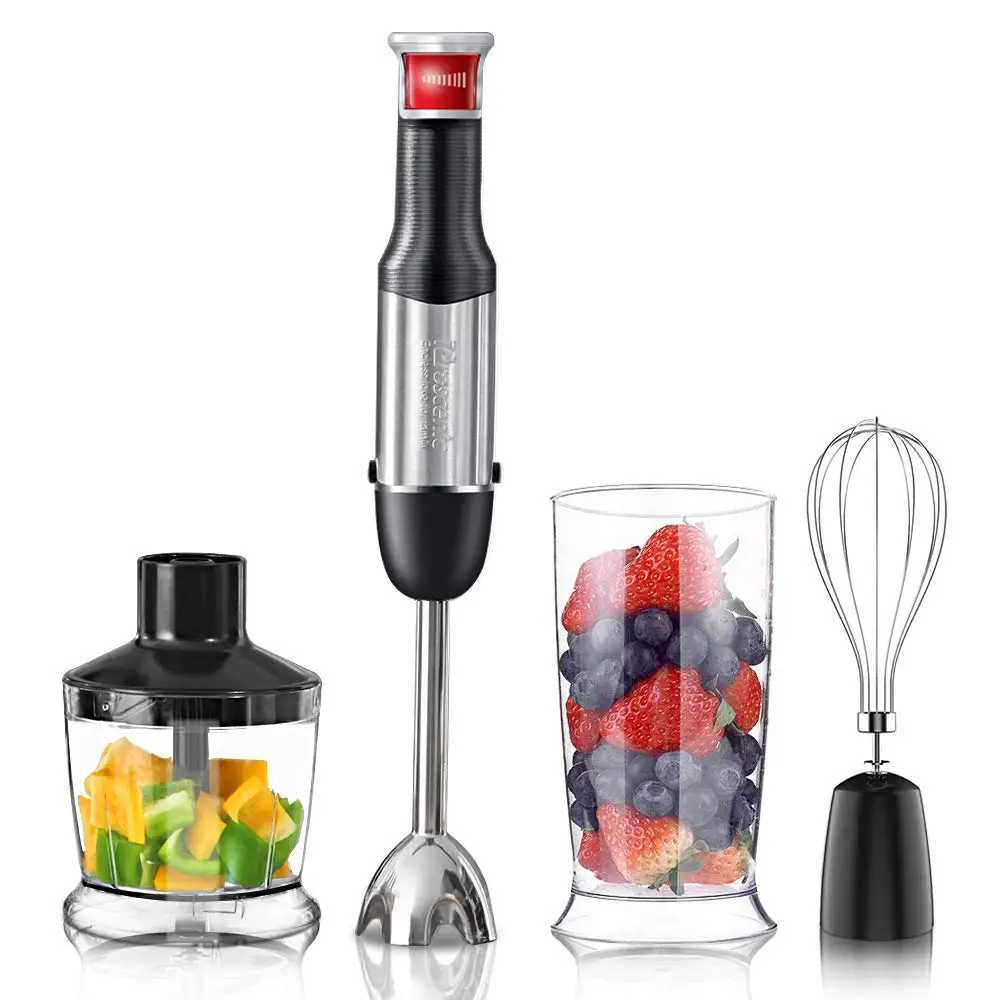
These skinny devices combine the power of a full-sized blender, the portability of a hand mixer, and the convenience of a food processor into one versatile package, making them perfect for those with limited storage space-and those who just really love to cook. Immersion blenders, also known as hand blenders or stick blenders, are the unsung heroes of the kitchen. Finally, consider whether you want a blender that can be slipped in a dishwasher, or you’re happy to don some rubber gloves and clean an immersion blender manually.Written by Cassidy Olsen, Valerie Li Stack, and Madison Trapkin However, if you want to crush ice or grind coffee beans as well as pulverizing fruit and vegetables, a jug blender is the way to go.Īs we’ve already mentioned, consider how much space you have in your kitchen - as jug blenders can be bulky, while immersion blenders are often small enough to be slipped into a drawer. Those that are on a budget, want to blend large quantities or hot ingredients such as pureeing stock and vegetables into hearty soups, should consider an immersion blender. However, what other tasks you plan to use the blender for, and how much storage space you have, will dictate which type of blender you opt for. Should I buy a jug blender or immersion blender?īoth jug blenders and immersion blenders are effective when it comes to blitzing fruit and vegetables into smooth drinks or sauces. Immersion blenders can be rinsed under the tap to remove any food residue. Some models even have a self-clean program, although lots now come with components that can go in the dishwasher. Add soapy water to a jug blender, and then simply switch on for a few seconds. Immersion blenders, however, aren’t restricted by a jug size, so you can put them into any size container, which makes them ideal for blending large quantities.īoth types of blender are relatively easy to clean.

Many models also come with personal blending cups included and these are perfect for making smoothies to-go, you blend all of the smoothie ingredients in the same cup that you drink from, so there’s less cleaning at the end. With a jug blender, you’re limited by the capacity of the jug - they do vary in size, but even the largest jug won’t be big enough to blend an extra large pan of soup in one go, so you’ll have to blend it in batches. Some of them feel heavy in use and can vibrate up through the handle while blending, which is uncomfortable if using for longer periods. And if you have any problems with your hands or wrists, this handheld blending appliance probably isn't right for you. However, a big downside is the lack of safety features - they can be switched on at any time.

So, depending on the attachments included they can be used for much more than simple blending tasks. Some models will also come with a whisk attachment and others come with mini choppers which are ideal for chopping herbs, nuts or even blending small quantities of sauce. You won’t get auto programs with an immersion blender, but they do have variable speed settings and some come with a stand-alone pitcher for blending in. Good immersion blenders will have a heat-proof metal shaft so they can be put directly into warm foods such as soup pans, although there are safety considerations when it comes to blending very hot foods. They’re not as powerful though and can’t be used for tasks like crushing ice, but they are great for blending soups, sauces, baby food, and milkshakes.

Immersion blenders are a more affordable option, they’re also more compact and easier to store than a jug blender - most are small enough to pop in a drawer. Know which type of blender you want? Rather than read on and find out the differences between the two types, check out the best prices for some of our top models. This can make it hard to decide which is best suited to you. Both rely on rotating blades to mix and puree foods, but there are a number of differences making each of them better suited to different blending tasks. Jug blenders and immersion blenders, which are also known as stick blenders or hand blenders.

There are two different types of blenders available on the market right now. In fact, according to research by the Association of Home Appliance Manufacturers more than 90% of households report owning at least one personal or full-size blender. So it's no surprise it’s earned a valued place in our kitchens. From blitzing fruit and vegetables into a smoothie to crushing ice or making soups and sauces, they can be used for a wide array of tasks. The best blenders fall into the first category and can be an extremely useful addition to your kitchen.


 0 kommentar(er)
0 kommentar(er)
